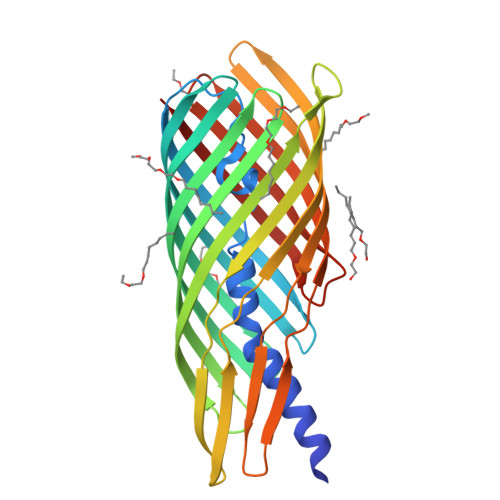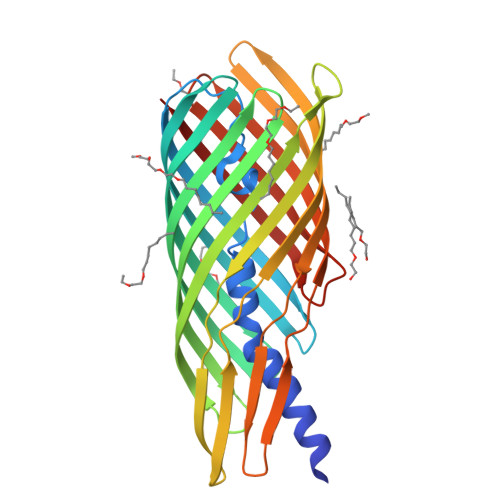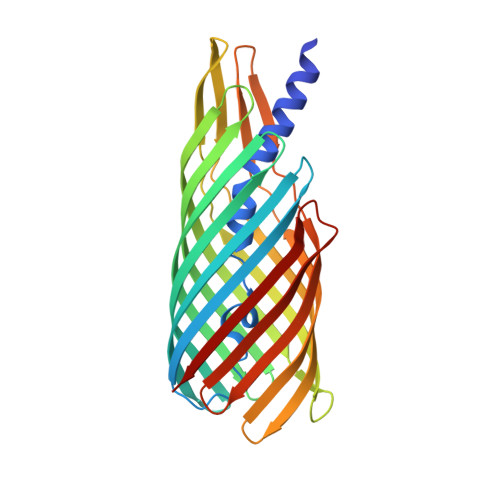Molecular basis for the activation of a catalytic asparagine residue in a self-cleaving bacterial autotransporter.
Barnard, T.J., Gumbart, J., Peterson, J.H., Noinaj, N., Easley, N.C., Dautin, N., Kuszak, A.J., Tajkhorshid, E., Bernstein, H.D., Buchanan, S.K.(2012) J Mol Biology 415: 128-142
- PubMed: 22094314
- DOI: https://doi.org/10.1016/j.jmb.2011.10.049
- Primary Citation of Related Structures:
3SLJ, 3SLO, 3SLT - PubMed Abstract:
Autotransporters are secreted proteins produced by pathogenic Gram-negative bacteria. They consist of a membrane-embedded β-domain and an extracellular passenger domain that is sometimes cleaved and released from the cell surface. We solved the structures of three noncleavable mutants of the autotransporter EspP to examine how it promotes asparagine cyclization to cleave its passenger. We found that cyclization is facilitated by multiple factors. The active-site asparagine is sterically constrained to conformations favorable for cyclization, while electrostatic interactions correctly orient the carboxamide group for nucleophilic attack. During molecular dynamics simulations, water molecules were observed to enter the active site and to form hydrogen bonds favorable for increasing the nucleophilicity of the active-site asparagine. When the activated asparagine attacks its main-chain carbonyl carbon, the resulting oxyanion is stabilized by a protonated glutamate. Upon cleavage, this proton could be transferred to the leaving amine group, helping overcome a significant energy barrier. Together, these findings provide insight into factors important for asparagine cyclization, a mechanism broadly used for protein cleavage.
Organizational Affiliation:
Laboratory of Molecular Biology, National Institute of Diabetes and Digestive and Kidney Diseases, US National Institutes of Health, Bethesda, MD 20892, USA.

















